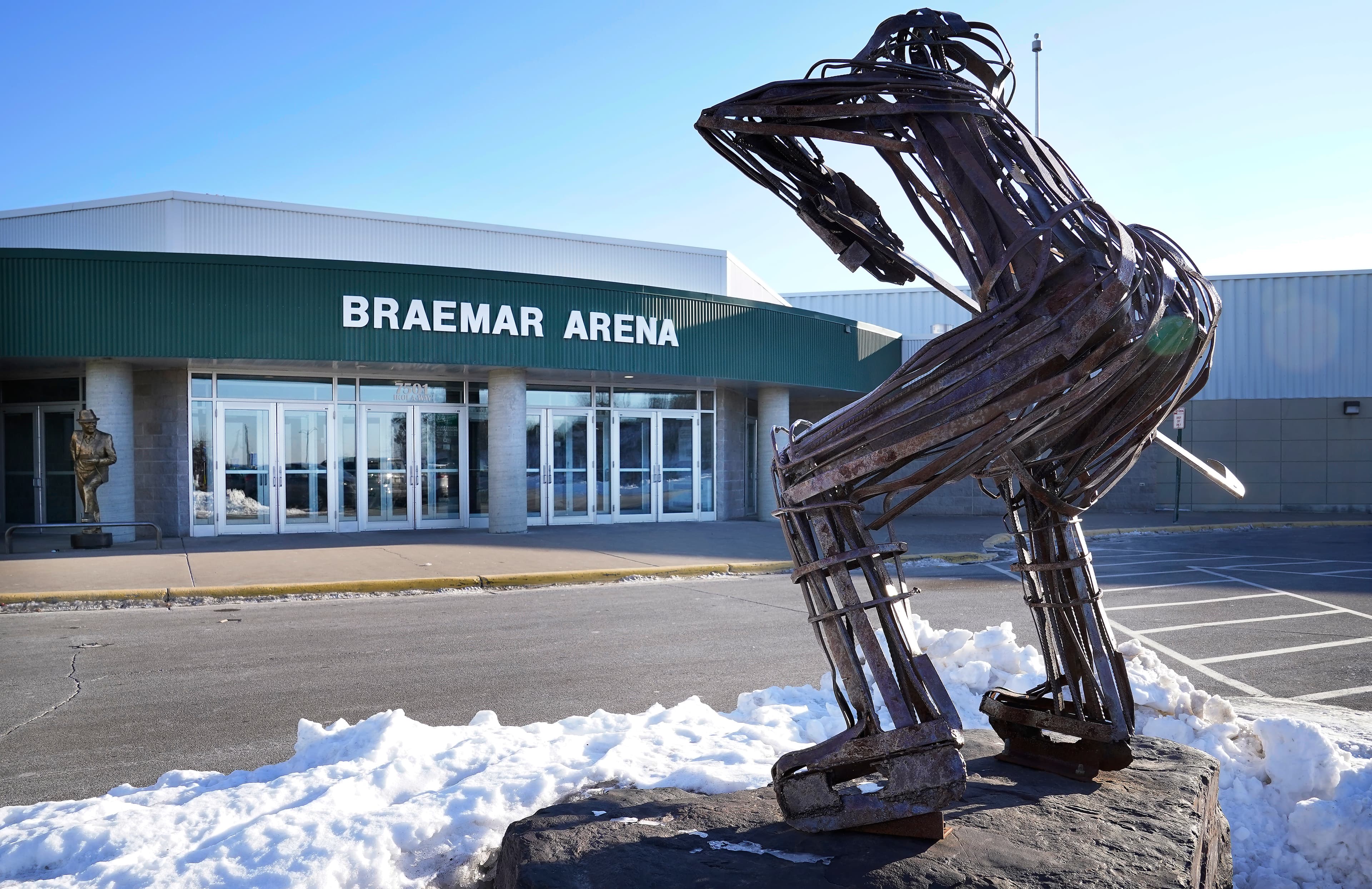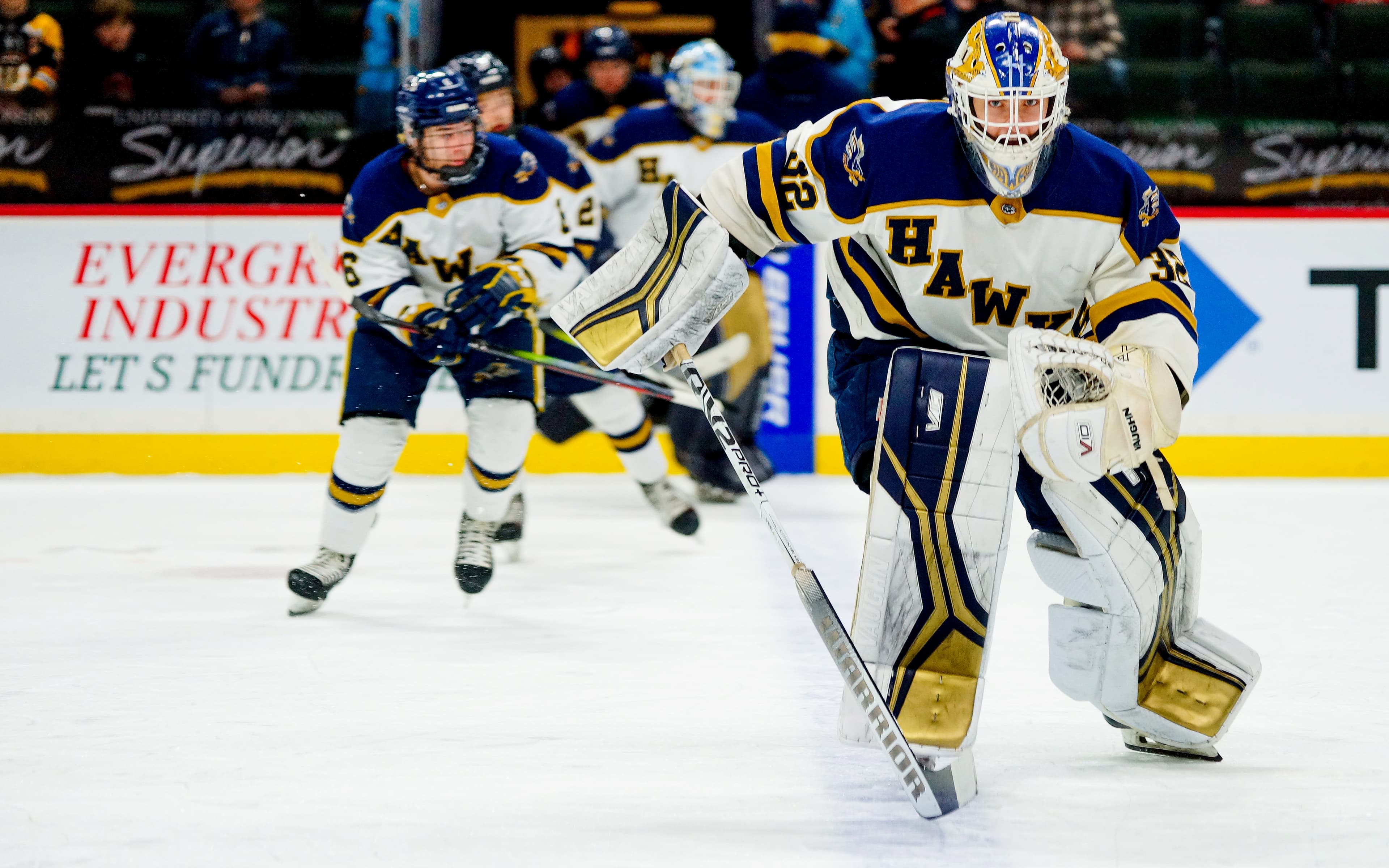Bloomington Jefferson and Kennedy boys and girls hockey home rink gets $37M facelift
Strib VarsityAccording to the city, the Ice Garden draws 457,400 visitors per year, with 10,000 hours of ice time booked annually, including 26 tournaments.

The Minnesota Star Tribune
Inside the same arena that Herb Brooks used to mold the 1980 U.S. Olympic hockey team into unlikely gold medal winners, there’s been a new miracle on ice.
Bloomington Ice Garden, one of Minnesota’s most storied and busiest arenas, underwent a $37 million renovation this year.
The city closed all three of the arena’s rinks for construction March 15 and re-opened exactly 200 days later, on Oct. 1, right as planned. Bloomington will celebrate with a new grand opening Nov. 8, when the Jefferson girls hockey team plays Armstrong.
“Nobody thought it was going to be possible to open on time,” rink manager Lenny Klevan Schmitz said. “But we opened Oct. 1, which was a small miracle in itself.”
Bloomington is burnishing its reputation as a sports boomtown. The city opened two new high school football stadiums this year — one for Jefferson and one for Kennedy — using $6.3 million from the school district’s long-term facilities management plan.
The Bloomington Ice Garden (BIG) renovation is part of the city’s three-pronged Bloomington Forward project, which includes a new community health and wellness center costing $102 million and $20 million in improvements for the Nine Mile Creek Corridor.
In November 2023, Bloomington residents approved a half-cent sales tax to pay for the project over 20 years. A University of Minnesota Extension analysis concluded that $101 million, or 65%, of that cost would be paid by nonresidents.
According to the city, BIG draws 457,400 visitors per year, with 10,000 hours of ice time booked annually, including 26 tournaments that help keep BIG bustling year-round. Up to 70% of BIG’s summer ice rentals are from groups outside Bloomington.
Mayor Tim Busse said that when he was pitching the Bloomington Forward plan to various groups in 2023, he’d ask people to raise a hand if their son or daughter or grandkids skated at BIG.
“Every hand in the place would go up,” Busse said. “So they got it. They understood how important this was, not only to Bloomington. This is a statewide project.”
Recent Coverage
Bursting with history
Opened with one rink in 1970 and eventually expanded to house three rinks, BIG has seen its share of hockey royalty.
Among Minnesota’s high school arenas, Busse puts BIG in a class with Braemar Arena (Edina), Aldrich Arena (Maplewood) and the Eveleth Hippodrome.
BIG is the arena where Bill Goldsworthy and the North Stars would practice when the Met Center was unavailable.
Other NHL teams, including the Edmonton Oilers, practiced there, too, and former rink manager Andy Baltgalvis remembers how grateful he was to get an autograph for his son from Wayne Gretzky.
Figure skating superstars Peggy Fleming and Dorothy Hamill practiced at BIG before some of their major events.
And BIG is where Brooks took a bunch of college players from Minnesota and Massachusetts in 1979 and blended them into a team that shocked the Soviets and defeated Finland to win gold in Lake Placid, N.Y.
“These [American] guys, they were kind of driven,” Baltgalvis said. “You could see they had a little hop in their step.”
If that’s not enough history, BIG’s main tenants — the Jefferson and Kennedy hockey programs — have delivered some extraordinary moments, too.
Starting in the early 1980s, there was a 15-year stretch when Jefferson or Kennedy reached the state tournament each season by winning Section 5.
Kennedy won the 1987 state title. Jefferson won five boys state titles between 1981 and 1994 and the 2001 girls hockey state title.
The Jefferson and Kennedy boys and girls programs are now merged, and home is still the Ice Garden.
BIG changes
The renovation itself was no small undertaking. As you walk into the arena, looking from left to right:
• Rink 1 is the building’s new crown jewel, with seating on both sides, a spacious upper concourse and a capacity of about 1,600. The Olympic-sized ice sheet, popular in the 1980s and ’90s, has been shrunk to NHL size, similar to the recent conversion for the Gophers’ 3M Arena at Mariucci.
• Rink 2 retains its utility role as more of a practice rink, but it’s been modernized. The most notable changes are on the second floor, which has a warm space to watch the ice below.
• Rink 3, the original championship rink, no longer has seats on the north side. But there is still seating for about 800, and some of those same climate-controlled views from the second floor.
“Not everybody wants to be cold when they’re at the rink,” Schmitz said. “Or Mom and Dad want to watch a game, and Susie wants to play on her iPad or do some homework. … You can watch what’s happening on both rinks [2 and 3] at the same time, if you want to bounce back and forth.”
BIG also has a new roof and a new ice plant, replacing one that relied on an R-22 refrigerant, which has become obsolete in the U.S.
Other new arena touches include a walking track above Rink 1 and new permanent locker rooms for the boys and girls varsity hockey teams.
The Ice Garden’s iconic blue and white scoreboards have been moved from Rink 3 to Rink 1. The city picked artist Adam Turman to paint a mural for BIG’s entryway.
Schmitz said he’s especially proud of how much more ADA-accessible the arena is now. He referenced Jefferson hockey player Ethan Glynn, who was paralyzed from the shoulders down playing freshman football in 2022.
“This is Ethan’s senior year, and all his buddies still play hockey and football,” Schmitz said. “And for the first time ever, he’s going to be able to get up into the stands, into the student section and cheer with his friends.”
The first chance comes with the grand opening on Saturday.
Schmitz, the rink manager who coordinated the latest BIG miracle, will drop the ceremonial first puck.
About the Author
Joe Christensen
Strib Varsity Enterprise Reporter
Joe Christensen is our Strib Varsity Enterprise Reporter and moved into this position after several years as an editor. Joe graduated from the University of Minnesota and spent 15 years covering Major League Baseball, including stops at the Riverside Press-Enterprise and Baltimore Sun. He joined the Minnesota Star Tribune in 2005.
See More



Comments